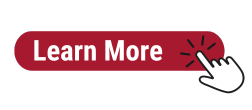Content
Life nowadays: speed, trends and technology facilitators
Brief of 21 Technologies - the meaning and impact on business:
- Artificial Intelligence - AI/Machine Learning, IoT& Mobile Social Internet
- Big Data & Blockchain - Cryptocurrency, Distributed Ledger Systems
- Automation - Information, Mission, Processes, RPA
- Robots, Drones & Autonomous Vehicles
- Immersive media - VR/ 360 & 3D Printing
- Cloud Computing - SaaS, IaaS, PaaS
- Voice Assistants - Interfaces, Chats and Natural Language Processing
- New touch interfaces - Touch Screens, Haptice 3 D Touch, paper
- Faster, better Internet & Technical proximity - Beacons, RFID, Wi-Fi
- New screens - next generation TVs, Digital Flag, MicroLEDS & Projections
competencies
- Current and future technologies awareness
- Technology impact on future work and life
- Start building digital mindset as ability to look at daily activities and habits from a digital perspective, consciously decide what to digitize and to what extent chose the right digital tools.
target audience
Employees who are not usually exposed to the use of current technology or new
discoveries in technology.


.png)
.png)
.png)